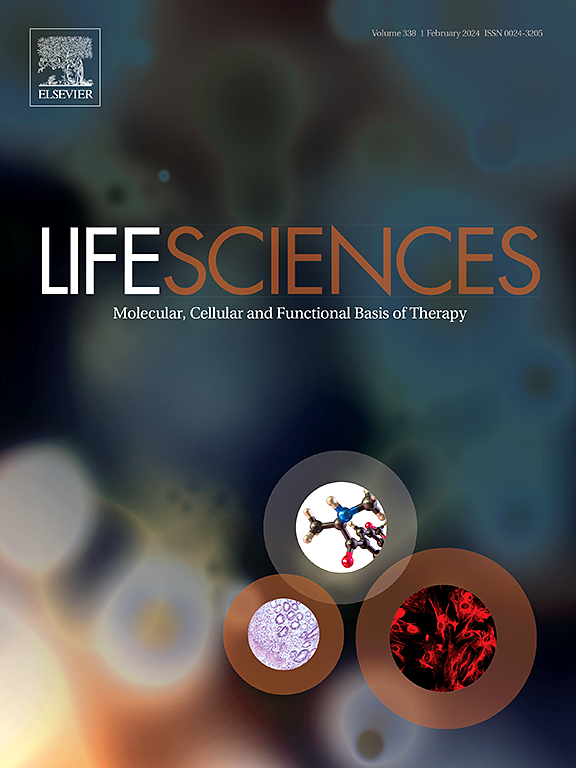Agmatine alleviates diabetic-induced hyposalivation in rats: A histological and biochemical study
IF 5.2
2区 医学
Q1 MEDICINE, RESEARCH & EXPERIMENTAL
引用次数: 0
Abstract
Diabetic patients commonly experience hyposalivation, which can cause challenges with eating, swallowing, dry mouth, and speaking. It also raises the likelihood of developing periodontal disease. This study aimed to evaluate if agmatine could improve the rate of salivation in rats with hyposalivation induced by streptozotocin (STZ). Five groups of Wistar rats were utilized with 10 animals in each group. They were classified as follows; Negative control group (G1), agmatine (G2) group, and Nicotinamide (NA)-STZ (G3) group; received a single intraperitoneal dose of 65 mg/kg of STZ after NA injection. NA was administered to protect residual β cells and enhance their insulin secretion; NA-STZ + Metformin (G4) Metformin-treated diabetic group; at day 10 diabetic rats received 50 mg/kg orally for 28 days, and NA-STZ + Agmatine (G5) at day 10 diabetic rats received a daily intraperitoneal dose of 300 mg/kg Agmatine for 28 days. The salivary flow rate was assessed weekly. Then, the animals were euthanized, both parotid (PG) and submandibular (SMG) salivary glands were dissected, and the following parameters were assessed; salivary glands' histopathology, aquaporin 5 (AQP5), caspase-3, E-cadherin expressions, inflammatory markers and finally, salivary glands' oxidative stress status. Agmatine has alleviated the salivary glands' dysfunction in STZ-induced diabetic rats. It normalized diabetes mellitus-associated salivary glands' abnormalities including histopathological abnormalities, decreased AQP5 and E-cadherin expressions, increased caspase-3 expression, and oxidative stress and inflammatory parameters. Agmatine alleviates diabetes mellitus-associated hyposalivation. It can promote PGs and SMGs function through its histological and AQP5 expression improvements.
鸦胆子碱可减轻糖尿病诱发的大鼠唾液分泌过少:组织学和生化研究
糖尿病患者通常会出现唾液分泌过少的情况,这会给进食、吞咽、口干和说话带来困难。它还会增加患牙周病的可能性。本研究旨在评估琼脂糖是否能改善链脲佐菌素(STZ)诱导的唾液分泌过少大鼠的唾液分泌率。研究使用了五组 Wistar 大鼠,每组 10 只。它们被分为以下三组:阴性对照组(G1)、琼脂糖组(G2)和烟酰胺(NA)-STZ 组(G3)。NA-STZ+二甲双胍组(G4):二甲双胍治疗糖尿病组,糖尿病大鼠在第10天口服50毫克/千克二甲双胍,共28天;NA-STZ+阿格马丁组(G5):糖尿病大鼠在第10天每天腹腔注射300毫克/千克阿格马丁,共28天。每周评估唾液流量。然后,将动物安乐死,解剖腮腺(PG)和颌下腺(SMG),并评估以下参数:唾液腺组织病理学、水蒸发素 5(AQP5)、Caspase-3、E-cadherin 表达、炎症标志物以及唾液腺氧化应激状态。鸦胆子碱缓解了 STZ 诱导的糖尿病大鼠唾液腺的功能障碍。它使糖尿病相关的唾液腺异常恢复正常,包括组织病理学异常、AQP5 和 E-cadherin 表达减少、caspase-3 表达增加、氧化应激和炎症参数。阿格马丁能缓解糖尿病相关的唾液分泌过少。它可以通过改善组织学和 AQP5 的表达来促进 PGs 和 SMGs 的功能。
本文章由计算机程序翻译,如有差异,请以英文原文为准。
求助全文
约1分钟内获得全文
求助全文
来源期刊

Life sciences
医学-药学
CiteScore
12.20
自引率
1.60%
发文量
841
审稿时长
6 months
期刊介绍:
Life Sciences is an international journal publishing articles that emphasize the molecular, cellular, and functional basis of therapy. The journal emphasizes the understanding of mechanism that is relevant to all aspects of human disease and translation to patients. All articles are rigorously reviewed.
The Journal favors publication of full-length papers where modern scientific technologies are used to explain molecular, cellular and physiological mechanisms. Articles that merely report observations are rarely accepted. Recommendations from the Declaration of Helsinki or NIH guidelines for care and use of laboratory animals must be adhered to. Articles should be written at a level accessible to readers who are non-specialists in the topic of the article themselves, but who are interested in the research. The Journal welcomes reviews on topics of wide interest to investigators in the life sciences. We particularly encourage submission of brief, focused reviews containing high-quality artwork and require the use of mechanistic summary diagrams.
 求助内容:
求助内容: 应助结果提醒方式:
应助结果提醒方式:


